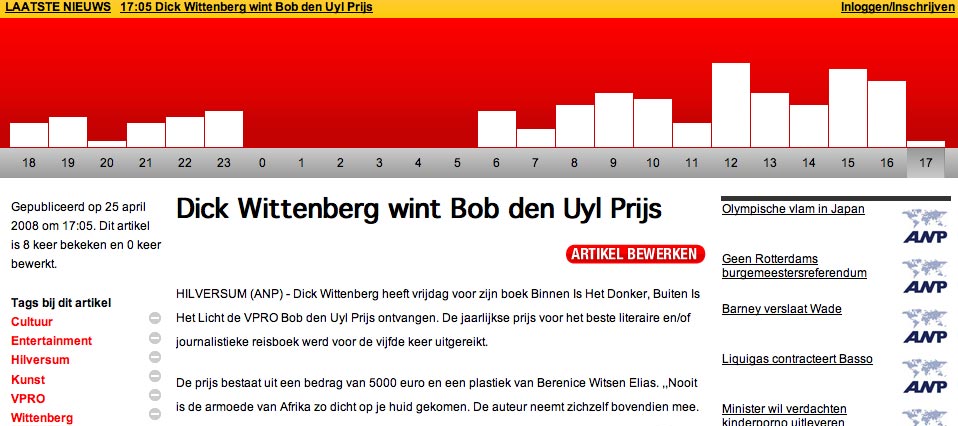Journalism.co.uk talks to reporters across the globe working at the collision of journalism and social media about how they see it changing their industry. This week, Adam Tinworth, RBI.

1) Who are you and what do you do?
I’m Adam Tinworth, and I’m currently head of blogging for business publisher Reed Business Information.
2) Which web or mobile-based social media tools do you use on a daily basis and why?
I’m a Twitter addict, and am constantly keeping up with the discussions there, either on my laptop or my iPhone.
More stories “break” to me through Twitter right now than any other sources. It’s so quick and easy to publish out with it, you can get news to people before you’re even on the second paragraph of a traditional news story.
I couldn’t live without my RSS feeds. I’ve been an RSS junkie for long enough that I predate Google Reader. I keep my subscriptions in Newsgator, so I can access them in NetNewsWire on my Mac, FeedDemon on my work PC, and the iPhone web version on my, well, iPhone.
While once upon a time I was a heavy forum user (and a Usenet/Mailing List guy before that), most of my conversational reading is in the blogosphere now.
I find the much stronger sense of a huge range of personalities you get on people’s blogs much more appealing than the handful of dominant personalities that tend to dominate forum-like discussion places. And I speak as someone who has been one of those selfishly dominant personalities in the past. I also occasionally flirt with social networks (note that that’s “flirt with” not “flirt in” :)), but find them limited and frustrating.
That said, both Seesmic and Flickr, which have strong similarities with forums, are sites I wish I had more time to explore the true potential of.
3) Of the thousands of social media tools available could you single one out as having the most potential for news either as a publishing or newsgathering tool?
Honestly, I think we’re only just scratching the surface of how blog-based CMS could completely change the way we deliver news to interested people.
I suspect that the news sites of the future will have much more in common with blogs that than monolithic sites with clunky, slow back-ends we build right now.
4) And the most overrated in your opinion?
Facebook (and social network sites in general). I think they’re interesting “walled garden” communication tools, but their strength is also their weakness: they only expose you to the thoughts and recommendations of those you already know.
They are something of an echo chamber, in which existing relationships are reinforced, rather than a way of being exposed to anything (or anyone) new.



